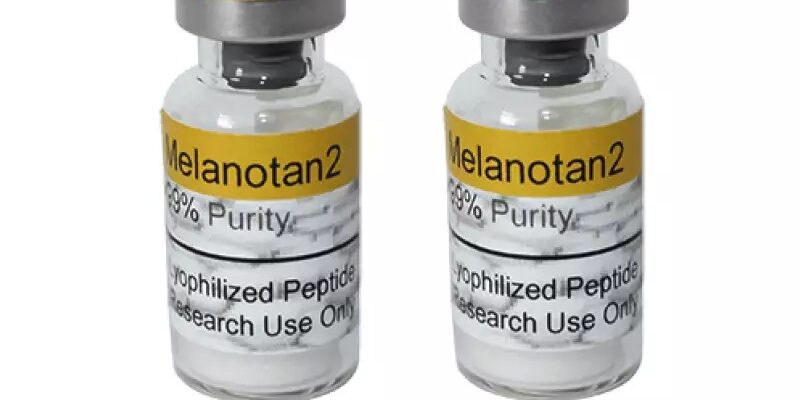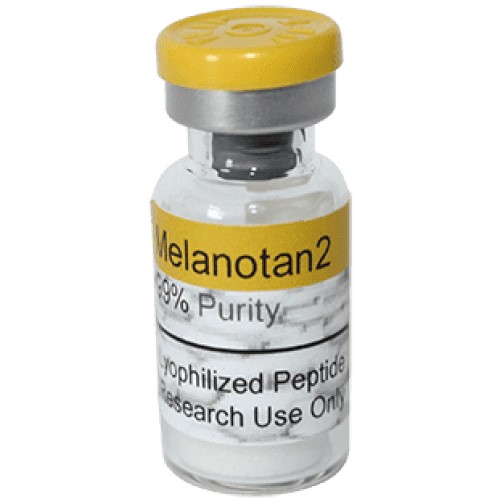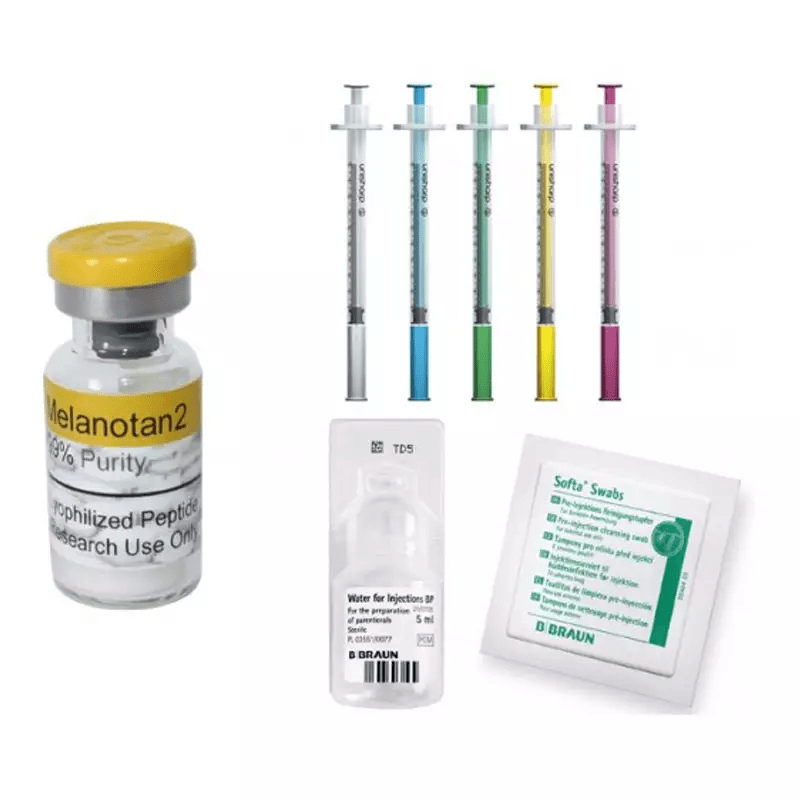
How Does Melanotan 2 Compare To Traditional Tanning Methods?
Achieving a sun-kissed tan has long been a beauty goal for many, but the methods for getting that glow vary greatly. Traditionally, sunbathing or tanning beds have been the go-to options for those looking to deepen their skin tone.
Recently, however, Melanotan 2 has emerged as an alternative. This synthetic peptide, which stimulates the body’s natural melanin production, offers a different route to a tan without prolonged UV exposure.
But how does Melanotan 2 measure against traditional tanning methods regarding effectiveness, safety, and aesthetics? In this article, we’ll explore the advantages and limitations of each approach, helping you decide which tanning method aligns best with your goals.
How Melanotan 2 Works vs. Traditional Tanning Methods
Melanotan 2 and traditional tanning methods achieve their results through very different processes. Traditional tanning methods, such as sunbathing and tanning beds, rely on UV rays to stimulate the production of melanin, the pigment responsible for the darkening of the skin.
When exposed to UV radiation, the skin naturally produces more melanin as a protective response, resulting in a tan.
However, this process also damages skin cells, which can lead to premature aging and an increased risk of skin cancer.
Melanotan 2, on the other hand, is a synthetic peptide that, when introduced into the body, mimics the hormone alpha-melanocyte-stimulating hormone. This hormone stimulates melanin production without the need for direct UV exposure.
Users typically inject small doses of Melanotan 2 over time, which gradually darkens the skin from within.
This method can offer a tan-like effect without the high levels of UV exposure that traditional tanning requires, potentially minimizing some of the health risks associated with UV rays.
Effectiveness: Which Method Achieves a Faster, Long-Lasting Tan?
When it comes to achieving a fast and long-lasting tan, Melanotan 2 offers certain advantages. Users often report that Melanotan 2 produces results within a few days to a week, with skin darkening progressively as they continue their dosage.
Unlike traditional tanning, which may require multiple hours or sessions of sun exposure, Melanotan 2 can lead to a tan more quickly and without repeated outdoor exposure.
However, traditional tanning has its effectiveness, particularly for those who tan naturally and evenly. A deep tan from consistent sunbathing can last a few weeks, although it fades as skin cells renew naturally.
Melanotan 2’s effects may also last a few weeks, depending on the individual, with some users opting to “top up” their dose to maintain their tan.
For those seeking a long-lasting tan with minimal maintenance, Melanotan 2 can be a time-effective alternative, but it may require periodic dosing to maintain the desired color.
Safety Considerations: Melanotan 2 vs. UV Exposure
Safety is a primary consideration for anyone seeking a tan. Traditional tanning methods involving UV exposure carry risks, particularly an increased likelihood of skin damage, premature aging, and skin cancer.
Prolonged UV exposure can damage DNA in skin cells, increasing the risk of developing melanoma and other skin cancers over time. Experts often advise limiting sun exposure and using protective measures such as sunscreen.
Melanotan 2, while avoiding direct UV exposure, has its safety considerations. Since it is a synthetic peptide, users inject Melanotan 2 into their bodies, and this comes with potential side effects. Some users report nausea, appetite changes, increased freckles, and darkening of moles.
Additionally, Melanotan 2 is not approved by regulatory bodies like the FDA, meaning that quality, dosage, and potential long-term effects still need to be fully regulated and studied.
While Melanotan 2 can minimize the risk of UV-related skin damage, users should weigh the possible side effects and consult a healthcare professional before use.
Achieving an Even and Natural-Looking Tan with Melanotan 2
For many, an even and natural-looking tan is the ultimate goal, and Melanotan 2 can offer a unique advantage in this area.
Since Melanotan 2 stimulates melanin production from within, it can result in a uniform darkening of the skin, which some users find more even than a natural tan that can be patchy due to varying sun exposure.
Traditional tanning, especially in the sun, can lead to an uneven tan, as certain body parts may be more exposed than others, creating tan lines or patchiness.
Melanotan 2’s gradual approach also allows users to control the intensity of their tan by adjusting dosages to reach their desired skin tone.
This level of control may appeal to those seeking a specific shade or depth of color without the unpredictable nature of sun exposure.
However, the appearance of a Melanotan 2-induced tan can vary by individual skin type, and users may still experience some variation in pigmentation.
Maintaining Skin Health and Reducing Sun Damage
One of the most attractive aspects of using Melanotan 2 over traditional tanning methods is the potential to achieve a tan with less sun damage. UV radiation is known to cause long-term damage to skin health, leading to wrinkles, sunspots, and an increased risk of skin cancer.
By reducing the need for sun exposure, Melanotan 2 users can achieve a tan while minimizing the harmful effects of UV rays.
For those who are committed to protecting their skin health while still desiring a tan, Melanotan 2 offers an alternative that might reduce their cumulative UV exposure.
However, it’s important to note that Melanotan 2 users are still encouraged to use sun protection, as exposure to the sun without protection still carries risks.
Melanotan 2 may allow individuals to enjoy a tanned look without frequent outdoor exposure, supporting long-term skin health by reducing sun-related aging and damage.
Global Melanotan 2 Market Size Forecast 2020-2029
The global Melanotan 2 market is projected to grow steadily from 2020 to 2029, driven by rising demand for alternative tanning solutions that reduce UV exposure.
Melanotan 2, a synthetic peptide that stimulates melanin production, offers users a safer and more convenient way to achieve tanned skin without prolonged sun exposure, which has increased its popularity across North America and Europe.
Additionally, consumer interest in personal appearance and sun-protection methods has fueled market growth, alongside expanding e-commerce platforms that make the product widely accessible.
While regulatory concerns and health safety considerations may impact market expansion, ongoing research and development into safer formulations could further boost consumer confidence.
Emerging markets in Asia-Pacific and Latin America are also expected to see growing interest as awareness of alternative tanning options increases, positioning the Melanotan 2 market for continued growth over the forecast period.
Conclusion: Choosing the Right Tanning Method for Your Goals
Melanotan 2 and traditional tanning methods offer unique pathways to achieving a tan but come with different risks, benefits, and practical considerations.
While Melanotan 2 provides a convenient alternative to UV exposure, potential side effects, and regulatory concerns are essential factors to consider.
On the other hand, traditional tanning methods carry well-known risks associated with UV exposure, such as skin damage and aging.
Ultimately, the best method depends on priorities, risk tolerance, and long-term skin health goals. Whether you choose to take either path, being informed about both methods can help you make a safe and suitable decision for your needs.









This Post Has 0 Comments